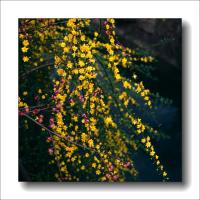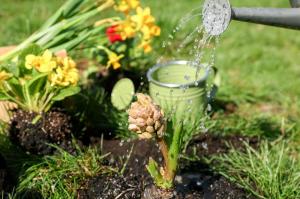Where to Plant Peepal Tree
The peepal tree, also known as the sacred fig or bodhi tree, holds religious significance in Hinduism, Buddhism, and Jainism. Apart from its spiritual significance, it is also beneficial for the environment and human health. Peepal trees absorb carbon dioxide and release oxygen, making the air healthier. They also provide shade and create a soothing environment, which helps to reduce stress and anxiety. However, before planting a peepal tree, it is necessary to consider the appropriate location to ensure its proper growth and development.
Soil and Sunlight Requirements
The peepal tree requires well-drained soil and abundant sunlight for its optimal growth. It can grow in a variety of soils, including clayey, loamy, and sandy soils. However, the soil should be fertile and have a pH level between 6.0 and 7.5. The tree requires full sunlight exposure to thrive and should be planted in a location with at least six hours of sunlight every day.
Space Requirements
The peepal tree is a fast-growing tree and can reach a height of 30 to 60 feet. It also spreads wide, making it essential to plant it in an area with plenty of space. The tree needs a minimum of 20 feet of space from any building, fence, or other trees. Planting the peepal tree too close to a building or another tree may cause damage to the structure or interfere with the growth of both trees.
Avoid Planting Near Waterbodies and Infrastructure
While the peepal tree is beneficial to the environment and human health, it is not suitable for every location. It is not recommended to plant peepal trees close to waterbodies such as lakes, ponds, or rivers. Peepal trees have an extensive root system and can damage nearby water pipelines by searching for water. Also, their leaves can fall into the water and create blockages, leading to sanitation issues. Additionally, planting a peepal tree near infrastructure such as power lines, telephone poles, and buildings can be hazardous and cause damage to the structure.
Planting Tips
Before planting a peepal tree, it is essential to prepare the soil by digging the area and adding organic fertilizer. The hole should be two times the size of the root ball and deep enough to accommodate the entire root system. Once the tree is planted, it should be watered thoroughly and regularly for the first year to establish its roots. The tree needs to be pruned regularly to maintain its shape and remove any dead or diseased branches.
Conclusion
Planting a peepal tree can have several benefits for the environment and human health. However, it is necessary to consider the appropriate location before planting the tree to ensure its optimal growth and development. The peepal tree requires fertile, well-drained soil, abundant sunlight, and plenty of space. It is also important to avoid planting it near waterbodies and infrastructure. By following these tips, you can plant a healthy and robust peepal tree and contribute to the environment and society.

 how many times do yo...
how many times do yo... how many planted tre...
how many planted tre... how many pine trees ...
how many pine trees ... how many pecan trees...
how many pecan trees... how many plants comp...
how many plants comp... how many plants can ...
how many plants can ... how many plants and ...
how many plants and ... how many pepper plan...
how many pepper plan...
































